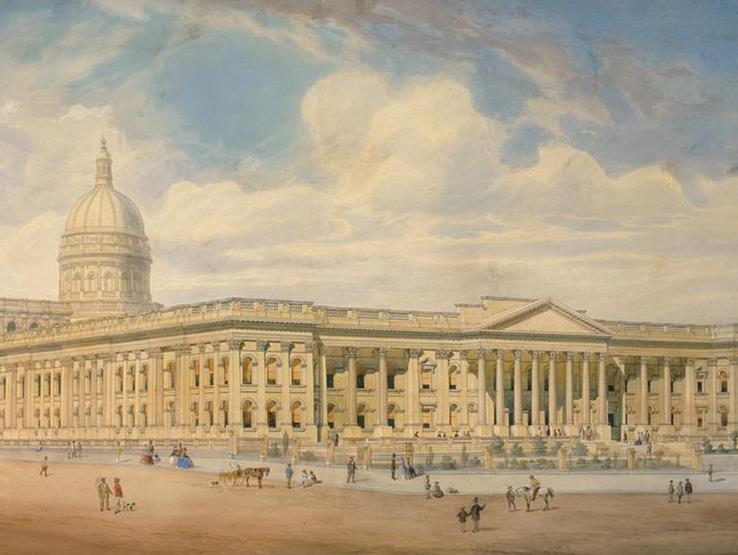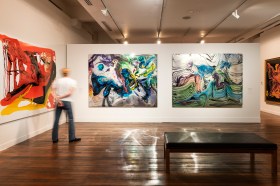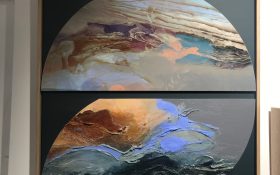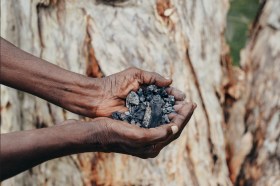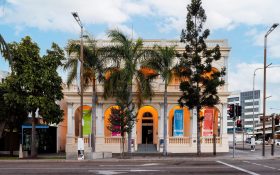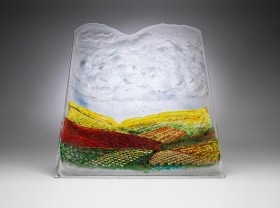Most of us brought up in Victoria are familiar with our fabulous library, with its massive almost floating dome, and take it for granted. But how many of us know about the architect, Joseph Reed, and his enlightened ideas? That he set up a company that still exists, the second oldest architectural firm in Australia?
The exhibition focuses on Melbourne’s major cultural institutions being developed for the greater public good at the time: the Library, the Art Gallery and the Museum. It is also about the buildings that would house them. These days they all have their own special place but in the 19th Century they were all planned to be in the one big institution. This was all conceived in the early 1850’s, on the eve of the gold rush.
There were less than 30,000 people in this fledgling city when the vision for a great public institution was being pushed. Melbourne was beginning to attract a remarkable number of enlightened and very intelligent people clearly connected to the rich discussion of ideas in Europe and America at the time. The evolution of this great institution involved many names we might recognise, including Redmond Barry and Governor Latrobe.
On one level this wonderful exhibition is about the evolution of the State Library and things it was to house. The curator, Professor Harriet Edquist, is Director of the RMIT Design Archives so understandably there is a strong element of content about architecture of the time and the architect of various stages of the State Library, Joseph Reed.Joseph Reed designed and built many of the buildings that define Melbourne. The State Library, the Exhibition buildings, Melbourne’s Town Hall, various iconic churches around Melbourne and warehouses, factories and houses in Melbourne, Bendigo and Ballarat. What is also fascinating are forays into the works Reed drew on, including books on architecture written in Venice during the Renaissance.
This exhibition is also illustrated with iconic artefacts from the Victorian era, such as a glass case of many species of hummingbirds, indicative of the collection fervour of that era. There is also a priceless book of coloured etchings by John Gould, brought out of the vaults for the exhibition. There are lists of the first books collected. Then there are digitised images of the construction process, appealing to the modern mind’s thirst for a multi-media insight into such a process.
This exhibition connects many stories of early Melbourne, paints a fuller context for these stories and provides an introduction to some of the finest minds of the nineteenth century, touching on some interesting discussions about ideas of civilisation itself. I found myself stunned by the journey into the depth of understanding about the richness of thought in the city I thought I knew so well.
Free, Secular and Democratic
Building the Public Library 1853 – 1913
slv.vic.gov.au/free-secular-democratic
30 May 2013 – 2 February 2014
Keith Murdoch Gallery
State Library of Victoria
Open 10am-5pm daily (to 9pm Thursdays)
There is also an E-book available on the exhibition
‘Building a New World’ by Harriet Edquist
www.slv.vic.gov.au/explore/our-publications/building-a-new-world
